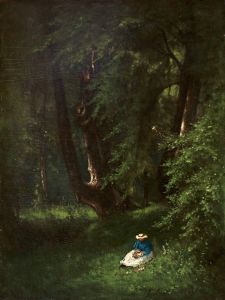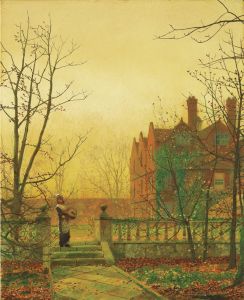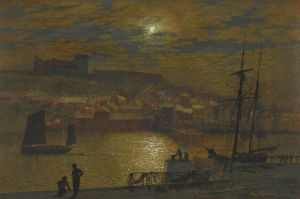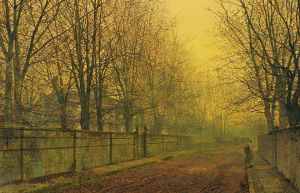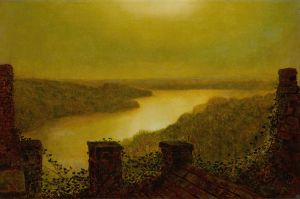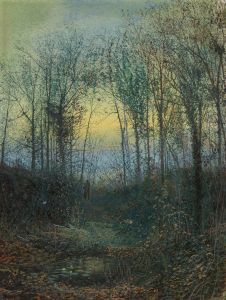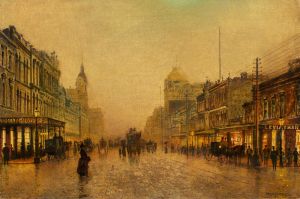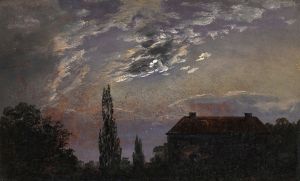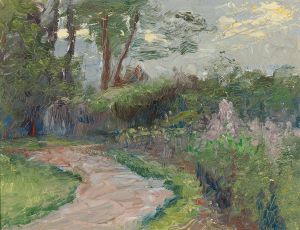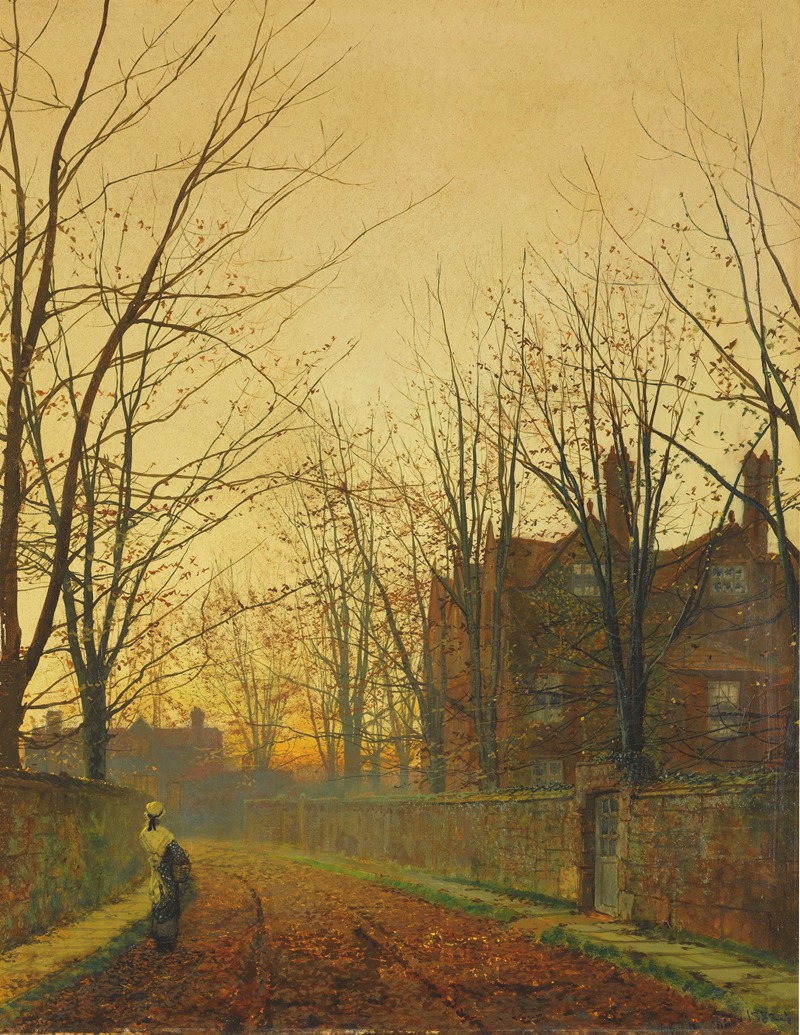
Late October
A hand-painted replica of John Atkinson Grimshaw’s masterpiece Late October, meticulously crafted by professional artists to capture the true essence of the original. Each piece is created with museum-quality canvas and rare mineral pigments, carefully painted by experienced artists with delicate brushstrokes and rich, layered colors to perfectly recreate the texture of the original artwork. Unlike machine-printed reproductions, this hand-painted version brings the painting to life, infused with the artist’s emotions and skill in every stroke. Whether for personal collection or home decoration, it instantly elevates the artistic atmosphere of any space.
John Atkinson Grimshaw was a renowned British painter known for his evocative and atmospheric landscapes, particularly those capturing the mood and light of the Victorian era. One of his notable works is "Late October," which exemplifies his mastery in depicting the subtle nuances of light and shadow.
Grimshaw was born on September 6, 1836, in Leeds, England. He initially worked as a clerk for the Great Northern Railway before pursuing a career in art, much to the dismay of his parents. Despite their disapproval, Grimshaw was determined to follow his passion for painting. He was largely self-taught, drawing inspiration from the Pre-Raphaelite Brotherhood and the works of James Abbott McNeill Whistler, with whom he later developed a friendship.
"Late October" is a quintessential example of Grimshaw's ability to capture the essence of a specific time and place. The painting is characterized by its meticulous attention to detail and the artist's skillful use of light to create a hauntingly beautiful scene. Grimshaw often painted urban and suburban landscapes, and "Late October" is no exception, featuring a serene yet slightly melancholic view that reflects the transition from autumn to winter.
The painting showcases Grimshaw's signature style, which often includes a focus on moonlit scenes and the interplay of natural and artificial light. In "Late October," the viewer can observe the delicate balance between the fading daylight and the encroaching darkness of evening. This interplay creates a sense of tranquility and introspection, inviting the viewer to pause and reflect on the passage of time.
Grimshaw's work is noted for its photographic realism, achieved through his meticulous technique and attention to detail. He often used a method of glazing, applying thin layers of paint to build up depth and luminosity. This technique allowed him to create the ethereal glow that is characteristic of his night scenes. In "Late October," this approach is evident in the way the light filters through the trees and reflects off the damp ground, enhancing the overall mood of the painting.
Throughout his career, Grimshaw's work was well-received, and he enjoyed considerable success. His paintings were exhibited at prestigious venues such as the Royal Academy of Arts in London. Despite his popularity, Grimshaw remained somewhat of an enigmatic figure, preferring to lead a private life away from the bustling art scene of the time.
"Late October" is a testament to Grimshaw's ability to evoke emotion through his art. The painting captures the quiet beauty of a fleeting moment, a hallmark of Grimshaw's work that continues to resonate with audiences today. His legacy as a master of light and atmosphere endures, and his paintings remain highly sought after by collectors and art enthusiasts alike.
John Atkinson Grimshaw passed away on October 13, 1893, in Leeds, leaving behind a rich body of work that continues to be celebrated for its beauty and technical brilliance. "Late October" stands as a prime example of his artistic vision and his ability to transform the ordinary into the extraordinary through his unique perspective and skillful execution.








